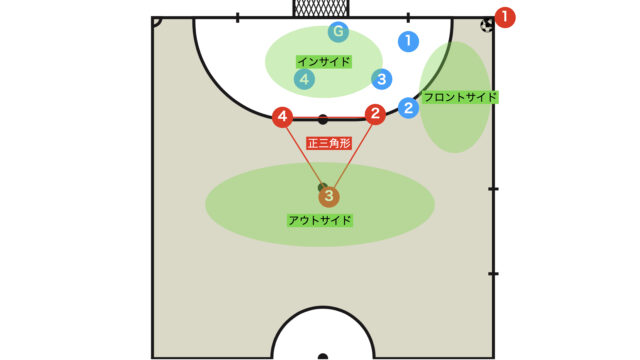The most common method for defending corner kicks is to use a Y-shaped zone.
However, in reality, if you look at the F-League and European leagues, you’ll see a wide variety of defensive methods.
This article provides a comprehensive explanation of all types of corner defense.
Types of Corner Defense
Corner kick defenses are mainly divided into the following three categories.
- Zone
- Man-to-man
- Mix (Zone + Man-to-man)
Let’s take a look at each one.

Zone DF
Y-shaped (2-1-1)
Even within Zone DF, there are two approaches: one where each player is assigned an area to defend, and another where they guard the passing lane.
Defending by Covering Zones
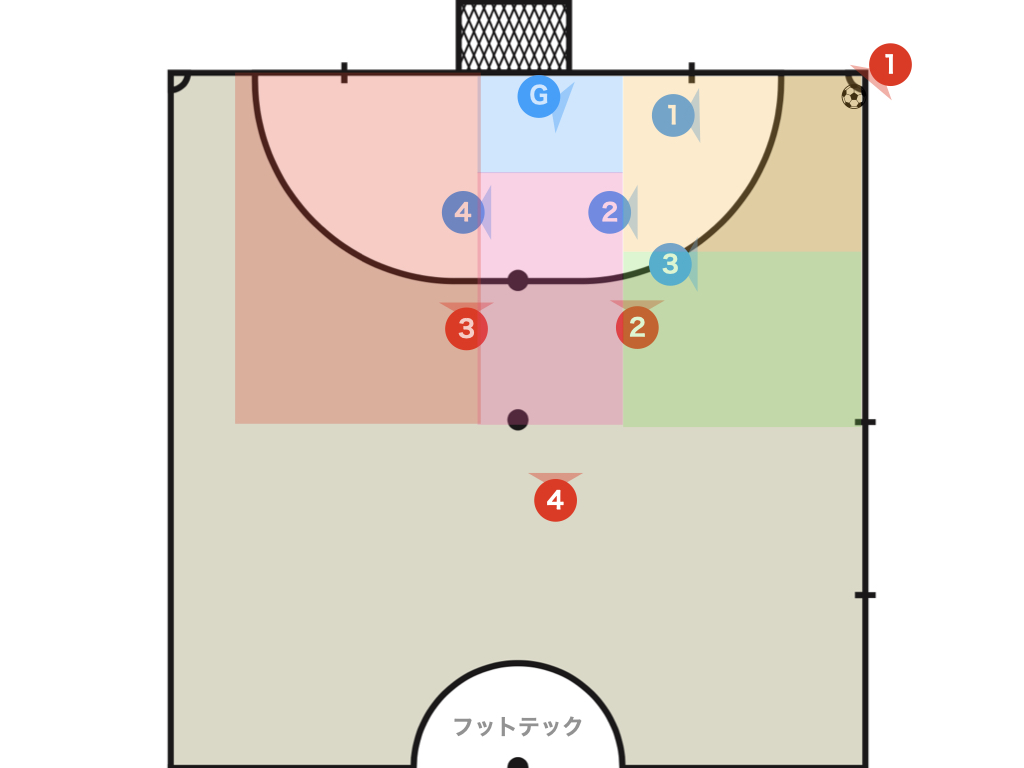
This DF does not focus on marking opponents, but instead defends the zone assigned to each player.
The method of assigning zones to each player varies from team to team.
Defending by Guarding the Passing Lane
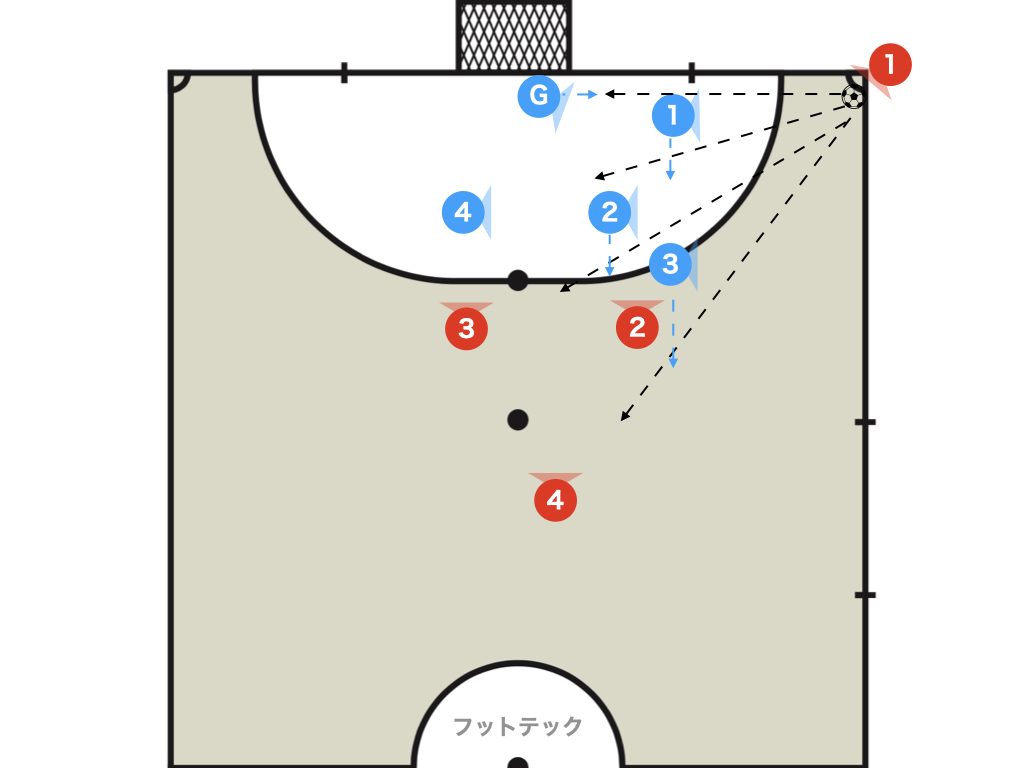
Since humans are not good at multitasking, focusing entirely on either the front or the rear (left or right) rather than trying to cover both results in higher performance and ultimately a wider defensive range.
Also, if a player steps forward to challenge a ball coming from behind, it might provoke an own goal, so it is safer to leave the ball at the back to the player positioned there.
As a precaution, here is a video showing an example of conceding a goal due to stepping out backwards.
Box Type (2-2)
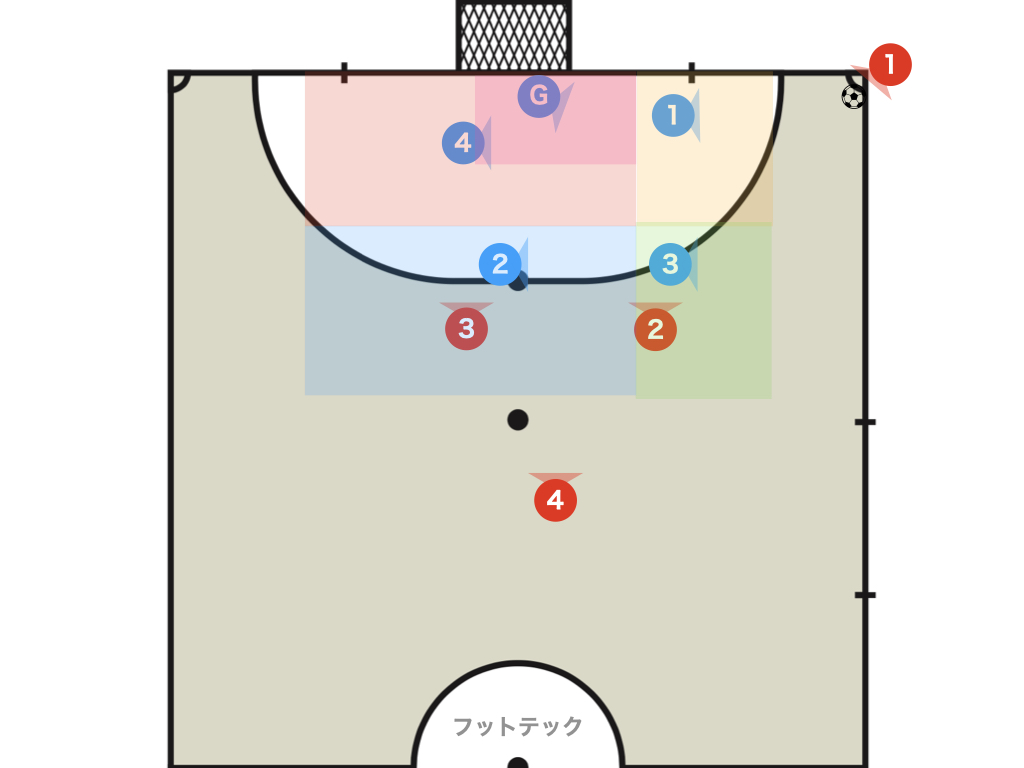
While it has the advantage of more easily covering the space further back compared to the Y-shaped zone, it also has the disadvantage of leaving the middle more exposed.
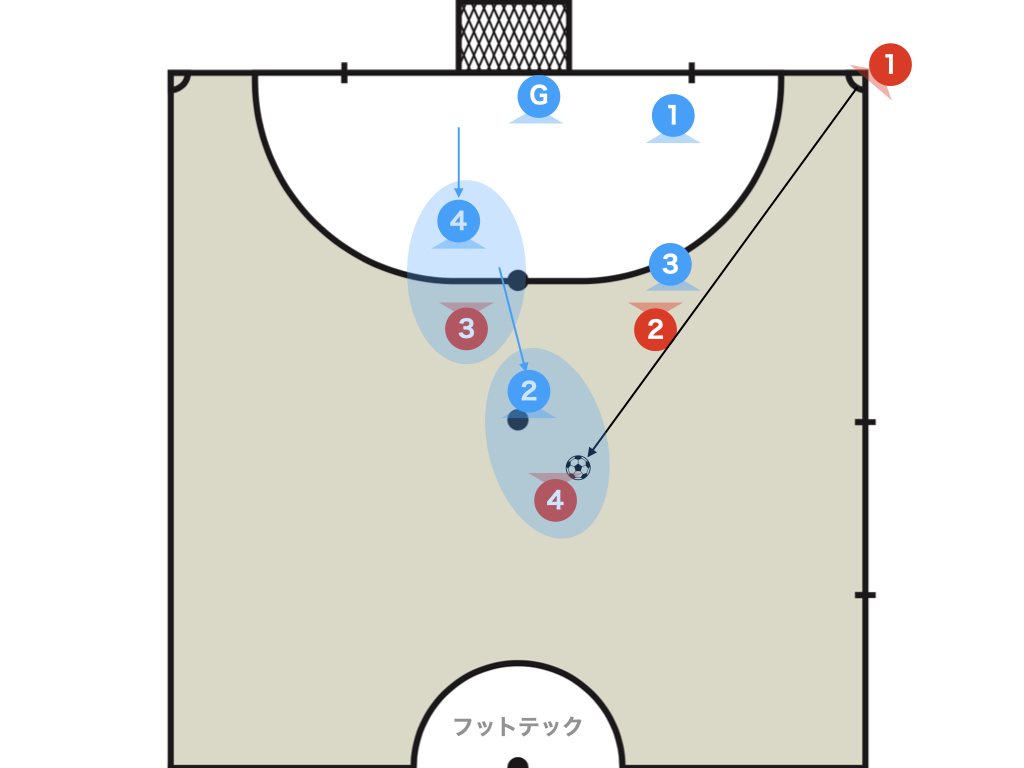
One of the advantages is that it is easier to deal with passes to the last row.
Man-to-man DF
There are two types of man-to-man DF: one where all players mark from the start, and another where players start marking just before the opponent moves.
All Man-to-man
Man-to-man DF places importance on the following three points:
- Awareness of one’s mark
- Positioning
- Body orientation
Let’s explain each one.
Each Player Covers Their Own Mark
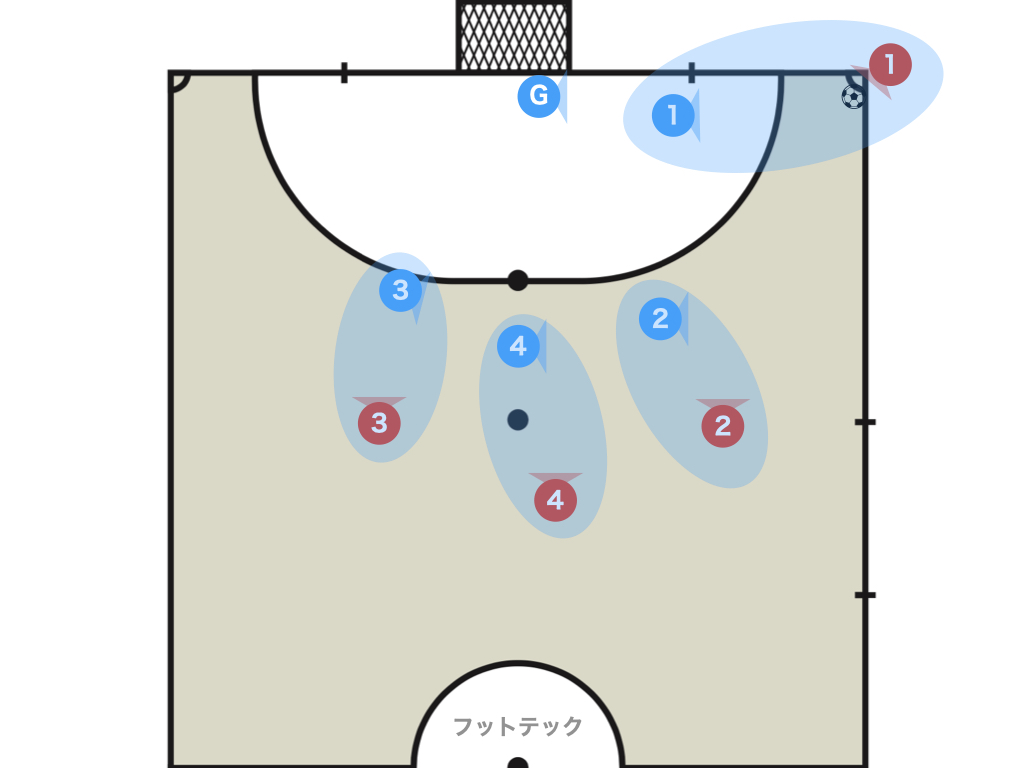
Often forgotten, but the kicker (red number 1) is covered by the near-side player (blue number 1).
If the opponent blocks and attempts to free their mark, a switch of marks should be executed.
Positioning
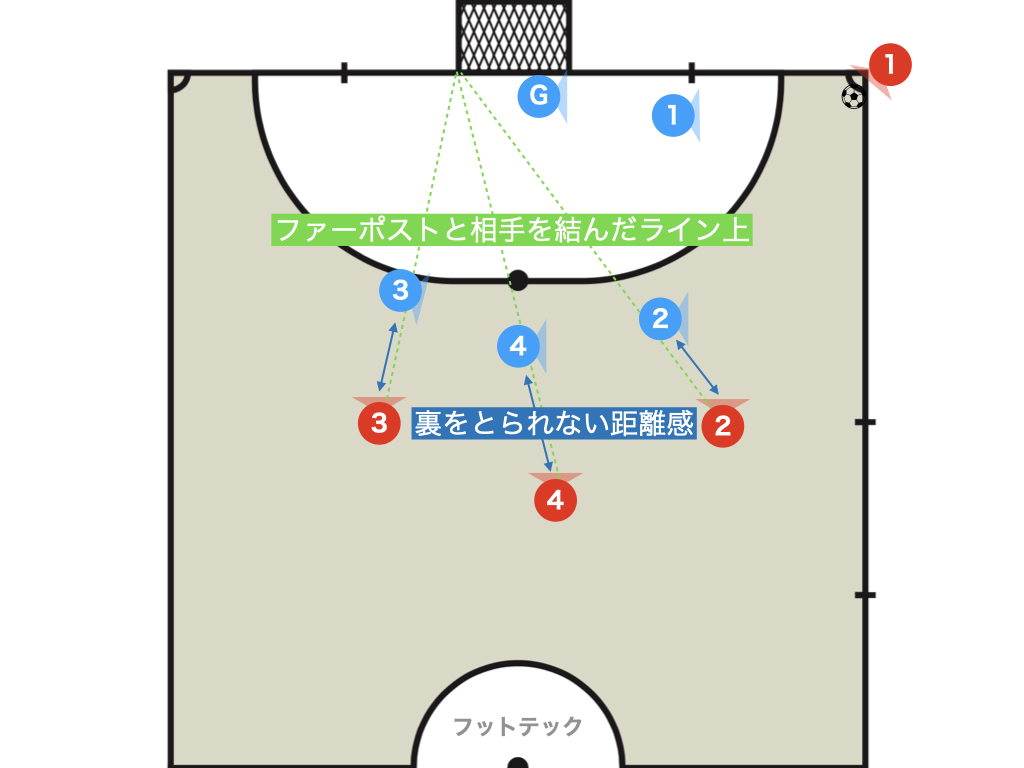
Maintain a spacing that prevents being outflanked, positioned on the same line as the far post and the opponent.
This will be explained later, but in man-to-man DF it is crucial to maintain a body orientation that allows you to see both your opponent and the ball within the same field of view, and considering that, the far post is optimal.
Maintaining a Body Orientation that Keeps Both Your Mark and the Ball in View
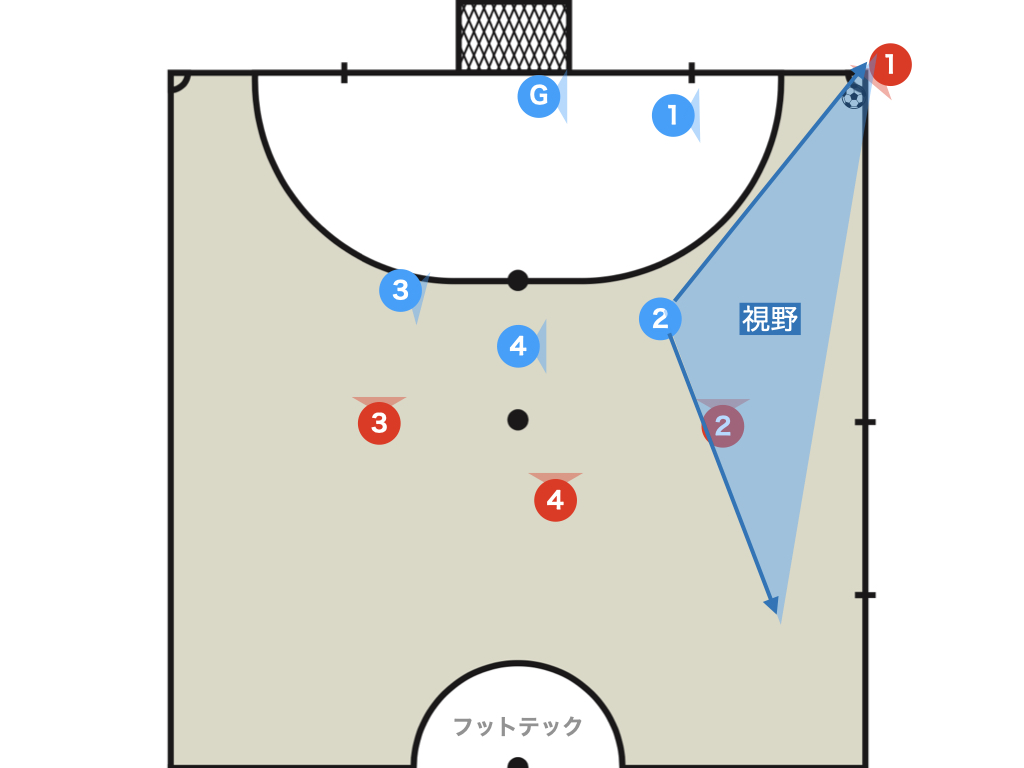
Be mindful of maintaining a body orientation that allows you to see both your mark and the ball within the same field of view.
If that’s difficult, consider shaking your head or stepping back slightly, among other adjustments.
The first reason is that it is challenging to maintain a body orientation that allows you to view both the ball and your mark within the same field of view, making it easy to lose track of your mark.
The second reason is that since the DF is positioned while returning to the goal, it is prone to provoking own goals.
For these reasons, man-to-man DF in corner kicks is considered to be very challenging.
Man-to-man Where Marking is Initiated at the Last Moment
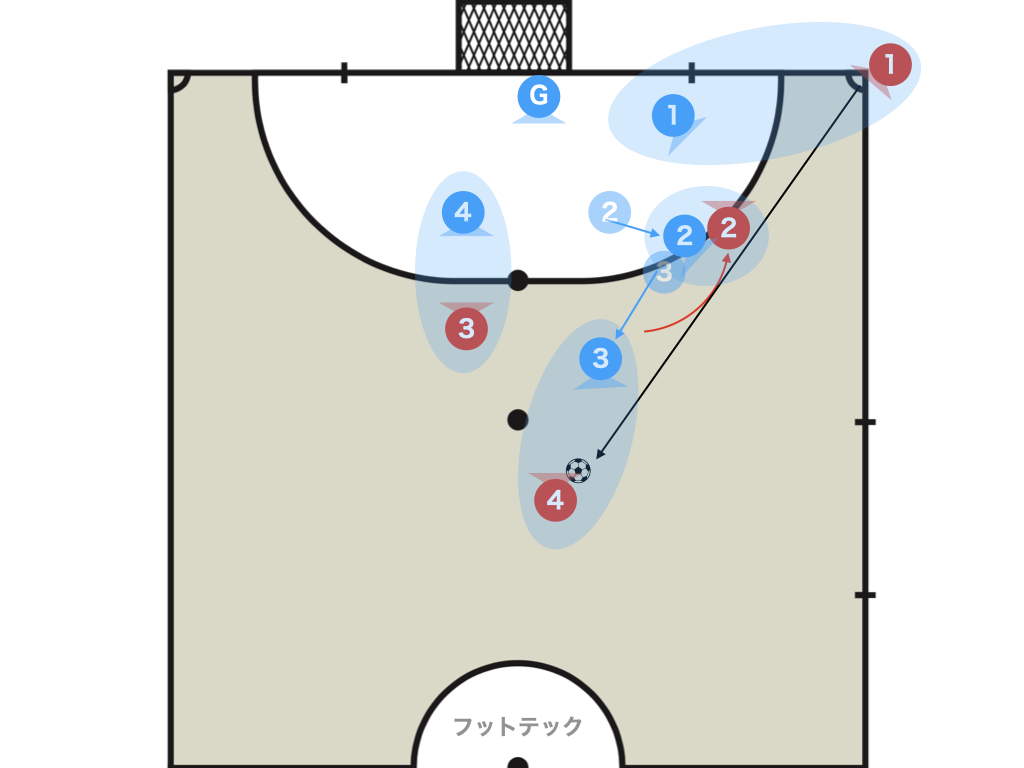
The initial positioning is similar to the Y-shaped zone, but as soon as the opponent moves, marking is initiated one by one in order.
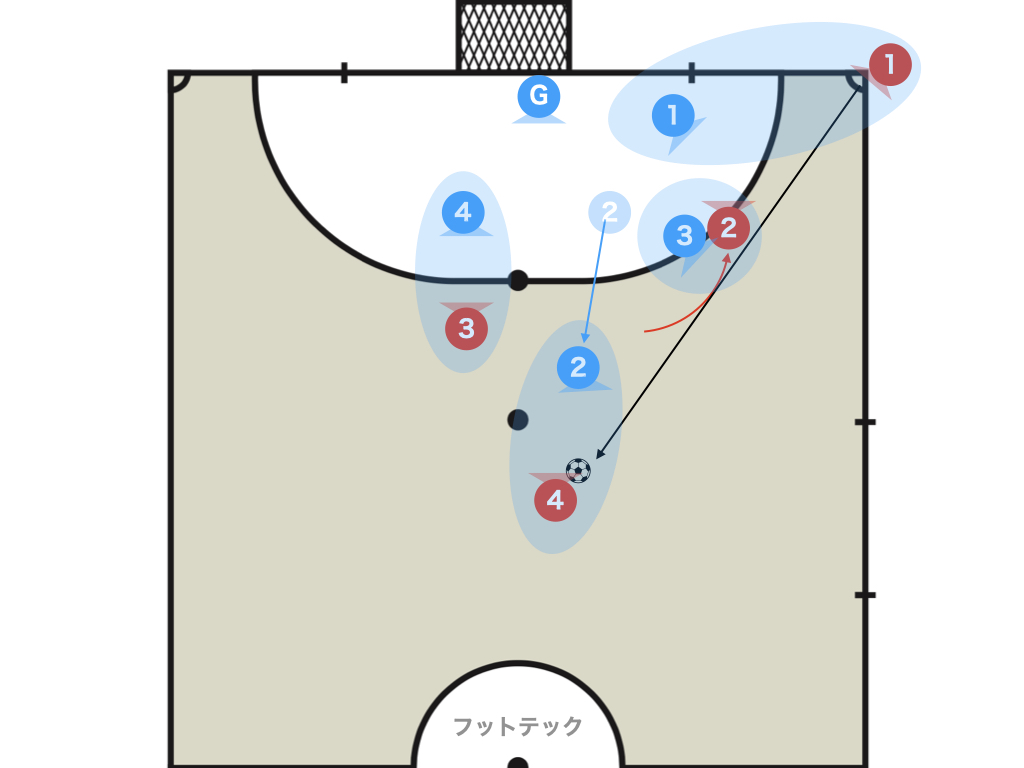
By directly dropping blue number 2 back, the risk of blue number 3 being blocked by red number 2 and being unable to move forward can be mitigated.
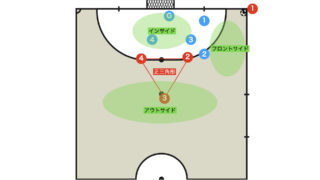
Mix
Triangle +1 (Triangle One)
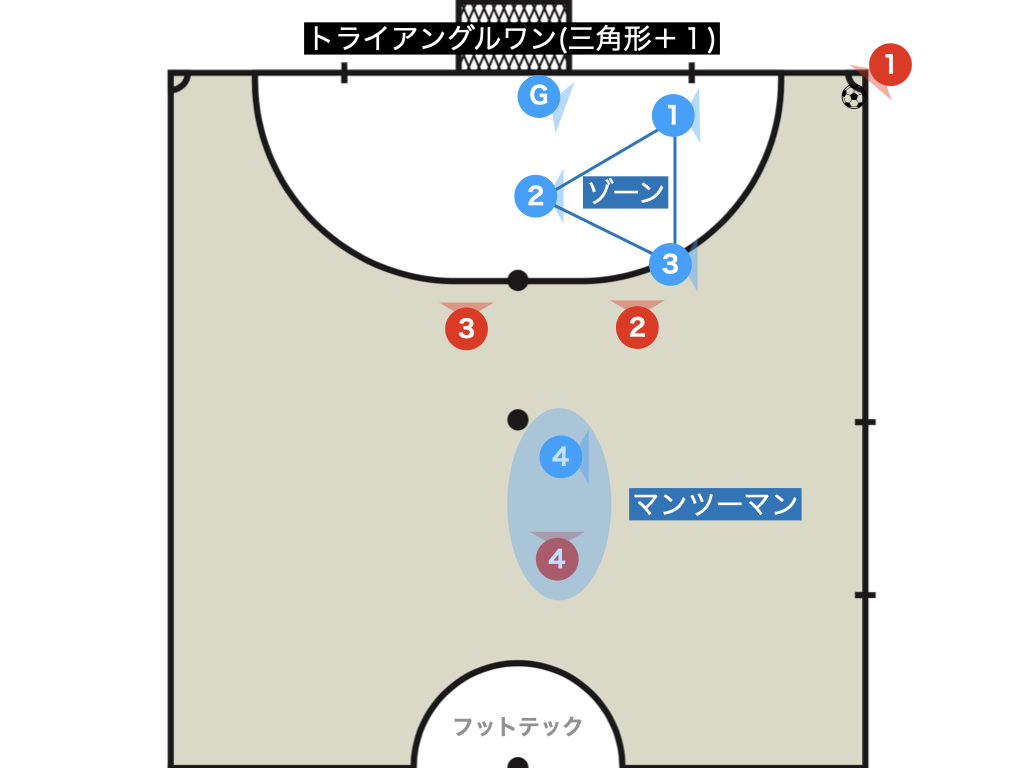
A mixed DF combining a triangle (zone) and +1 (man-to-man).
It is named after the well-known Triangle Two DF in basketball.
Extremely effective when there is a powerful shooter in the rear (red number 4’s position) while it also has the drawback that the middle becomes exposed.
In particular, there is a very high risk of receiving a float pass to the second player followed by a headed shot.
Thank you very much for reading this article to the end.
If you found this article useful, please consider sharing it using the social media share buttons above.
We regularly share valuable insights on futsal tactics on Twitter, so if you haven’t followed us yet, we’d appreciate your support!
We are committed to raising the level of futsal in Japan by sharing high-quality information through discussions with individuals who have coaching experience in the F.League and overseas.
If you have any questions or notice any mistakes, feel free to leave a comment below.
We update our articles regularly, so if you’d like to keep reading, please bookmark our site or search for “FutTech”!

